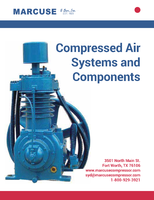Agro Research Institute Guarantees Crop Yields Through Data
Measurement System Provides Precision Data on Soil Properties
CHESTERLAND OH — Farmers can now precisely determine the efficiency of their land thanks to a new system developed by the Leibniz-Institute of Vegetable and Ornamental Crops.
Users generate high-resolution soil maps based on data from a Delphin DAQ system
• Adapted from the original, 'Guaranteeing Yields' from Delphin Technology
In an interesting agricultural application, Delphin Technology provided The Leibniz-Institute of Vegetable and Ornamental Crops (LIVO) with a custom data acquisition system for use in its test fields. The measurement system has been developed as part of LIVO's research aimed at establishing a scientific basis for efficient horticulture methods. Asparagus, kohlrabi, cloves, daffodils etc. need to be high quality, affordable and sustainably produced. In this Applications Note from CAS DataLoggers, we outline how Delphin hardware and software gathered, analyzed and documented the necessary soil data to ensure higher crop yields.
Seventy-five years ago, Germany's agricultural land was divided up into 50 × 50 meter sections. Drilling down to 1 meter took place and soil samples were taken, analyzed and mapped. Today, farmers and growers rely on their information to help their efforts. However, modern measurement techniques now exist to deliver more accurate information. "This enables us to treat the land in a way that ensures a more ecologically friendly and efficient agriculture," emphasizes Dr. Jörg Rühlmann, a Project Leader at LIVO.
To achieve this, researchers need to collect high-resolution data on soil properties. Dr. Rühlmann explains: "Truly efficient farming needs to not only match local conditions but also has to take into account the variable properties within soil across each section of land to optimize the use of fertilizers, irrigation systems, sowing methods and tillage depths." This requires techniques far beyond drilling to obtain soil data.
Seeing Beneath the Soil:
To achieve this, researchers need to collect high-resolution data on soil properties. Dr. Rühlmann explains: "Truly efficient farming needs to not only match local conditions but also has to take into account the variable properties within soil across each section of land to optimize the use of fertilizers, irrigation systems, sowing methods and tillage depths." This requires techniques far beyond drilling to obtain soil data.
Seeing Beneath the Soil:
LIVO's test fields are surrounded by a lush expanse of meadows, crops and woodlands just south of Berlin. Here at LIVO, a mobile, rolling system of electrodes patrols beneath the soil. This innovative measurement system is named "Geophilus electricus" after a species of centipede. Like its namesake the system is shaped similarly, moves in the same fashion and can even ‘see' into the soil.
Geophilus electricus is built to get a good look at real soil conditions and is a joint project between the LIVO, Potsdam University (Institute of Earth and Environmental Science, Dr. Lück) and Delphin Technology. This sensor array examines the electrical conductivity of soil, a property affected by the soil's water content andgrain size, as well as its salt content and temperature. LIVO then uses the measurement data to view the soil's overall properties.
"Geophilus enables us to map soil variations over small areas and to optimize the use of fertilizers, water, seeds and fuel," says Dr. Rühlmann. Six pairs of pivoting metal discs, set up one behind the other, and electrically isolated from one another, are used as rolling electrodes. The first pair feeds current into the soil; the remaining five measure voltages in the soil at five different depths. "The greater the distance betweenthe feed and the potential electrode, the deeper the view into the soil." Currently the system can be deployed to a depth of 2 meters.
To obtain meaningful measurements and subsequently generate 3D soil mapping charts, the LIVO team required measurement hardware and software coupled to their system of electrodes. They opted for German manufacturer Delphin Technology, a pioneer in measurement devices. The flexibility of its development services was a decisive factor. "In contrast to the majority of geophysical measurement equipment, Delphin systems are not based on specific stand-alone systems but on standard, industrial-grade equipment available on the market", stated Dr. Rühlmann.
Delphin's standard products include TopMessage hardware and ProfiSignal software, both of which are in use in this application. "The hardware, firmware and software interfaces can be varied according to our needs and therefore adapted to exactly what we want, including personalized documentation of data and results," said the project leader. Ongoing technical developments can be integrated, including those to the Geophilus: "A major benefit is the system's extendibility. Additional sensors are easy to integrate into the measurementsystem."
It's not just extendibility that LIVO demands from its measurement system: it also has to be robust and resistant to wind, weather and shocks; capable of independent operation; and able to transmit data via WLAN. Furthermore, the system must be able to acquire geographical coordinates via GPS and simultaneously record them along with themeasurement data from the specific measuring points. All these needs must be provided in a system that is as compact as possible.
Another important factor was measurement speed. Results need to be observable while recording is taking place,and fast mapping is also necessary. The Delphin system also provides an export function to Google Earth, enabling a convenient way for users to portray the data.
Single mapping for multiple gains:
Soil mapping only needs to take place once to improve yields. Farmers then benefit year after year because they no longer have to farm a field as one unit, instead working the land according to management zones. In this way zones are individually farmed by loading the maps into the onboardcomputers of modern farming equipment with GPS connectivity.
Dr. Rühlmann sums up:
"Precision farming means achieving an optimal compromise between high quality and quantity yields, minimal environmental contamination, sustainability, and profit."
The LIVO project has already successfully completed an initial test phase. 1000 hectares of arable land in Trebbin, Germany has undergone detailed mapping. The farmer who owns the land is now using the data to optimize the fertilizing and irrigation of his fields. Agricultural advisory boards can also benefit from these developments. Mappings from Geophilus can deliver the data for models which calculate recommended fertilizing quantities.
Potential uses:
Agriculture is the most obvious area to benefit from a mapping of soil variations.Optimized fertilizing, sowing, tilling and irrigation are then achievable. Agricultural research institutions can use the mappings when evaluating field trials. Additionally, the re-cultivation of former slag heaps from open cast mining can also benefit from mapping.
Other potential uses are in construction site surveys and landfill sealing. Dr. Rühlmann speculates: "To do the kind of high-resolution mapping needed here just requires miniaturized rolling electrodes and a slow-moving vehicle – the Delphin TopMessage system can remain virtually as is." Mapping can also benefit golf and sport field management by optimizing its fertilizing, irrigation and drainage systems.
For further information on the Delphin TopMessage data acquisition system, additional Delphin measurement systems, or to find the ideal solution for your application-specific needs, contact a CAS Data Logger Applications Specialist at 800-956-4437 or visit our website at www.DataLoggerInc.com.




